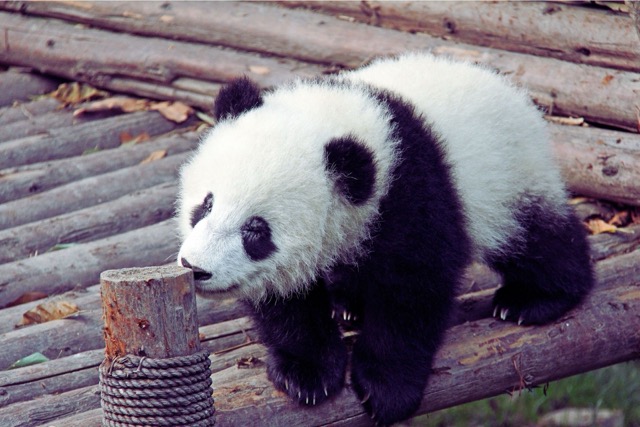Explore the Vienna Zoo: A Historic and Ecological Treasure in Schönbrunn
— Discover the Vienna Zoo at Schönbrunn, a historic UNESCO site home to over 700 species, including endangered animals. Learn about its rich history, conservation efforts, and visitor tips.

Set within the royal gardens of Schönbrunn Palace, the Vienna Zoo (Tiergarten Schönbrunn) isn’t just the oldest operating zoo in the world—it’s where imperial grandeur meets modern conservation. Founded in 1752 by Emperor Franz I Stephan, the zoo began as a private menagerie for the Habsburgs and evolved into a global leader in species protection and ecological education. Today, it spans 17 hectares of landscaped parkland, housing more than 700 species, from playful orangutans to rare giant pandas, making it one of Vienna’s most captivating cultural and natural experiences.
History of Vienna Zoo: From Imperial Menagerie to Modern Conservation Leader
The Beginnings: An Imperial Zoo (1752-1921)
Founded in 1752 by Emperor Franz I Stephan and his wife, Empress Maria Theresa, Schönbrunn Zoo started as an imperial menagerie, providing a place where royalty could marvel at exotic creatures. Initially, only those "appropriately dressed" were allowed to visit, highlighting the exclusive nature of the early zoo.
Over time, the zoo expanded both in size and public accessibility. After the collapse of the Austro-Hungarian monarchy in 1918, the zoo became state property, later opening to the public. (Information sourced from the Vienna Zoo website)
Modern Era and UNESCO Recognition (1992-Present)
Since 1992, Schönbrunn Zoo has been managed by Schönbrunner Tiergarten GmbH, a public–private partnership that turned this historic site into a model of sustainability. The zoo’s 1996 inclusion in the UNESCO World Heritage List affirmed its dual identity as both a scientific institution and a cultural landmark. Consistently ranked among the Best Zoos in Europe, it has pioneered breeding programs for endangered species and innovative habitats that prioritize animal welfare and environmental awareness—blending 18th-century elegance with 21st-century ethics.
Animals and Exhibits: A World of Wildlife at Vienna Zoo
Vienna Zoo spans 17 hectares and houses diverse ecosystems that mimic the natural habitats of its animals, creating a home for over 700 species. Highlights include:
Iconic Species
- Giant Pandas: Schönbrunn Zoo is among the few zoos outside of China with giant pandas, a true attraction for visitors and a central focus of their conservation efforts.
- African Elephants: Since 1991, only African elephants have been housed here, as part of an endangered species breeding program.
- Siberian Tigers, Jaguars, and Cheetahs: These majestic cats enjoy spacious, naturalistic habitats that were expanded in 1994, reflecting the zoo's commitment to providing environments conducive to natural behavior. (Information sourced from the Vienna Zoo website)
Themed Habitats and Attractions
- Rainforest House: A slice of Southeast Asia recreated in Vienna, complete with lush tropical plants, exotic birds, and fascinating reptiles.
- Aquarium and Terrarium House: Featuring a stunning coral reef, this exhibit offers a peek into the diverse aquatic life that thrives in tropical and marine environments.
- Giraffe Park: Showcasing a blend of historical design and modern technology, this park was awarded the Vienna Environmental Prize for its sustainability efforts. (Information sourced from the Vienna Zoo website)
Conservation Efforts at Schönbrunn Zoo
Beyond being a visitor attraction, Tiergarten Schönbrunn is at the forefront of international wildlife conservation. Its motto—“Protect and Preserve Species”—is reflected in long-term breeding partnerships with organizations in Asia and Africa, supporting populations of giant pandas, Siberian tigers, and African elephants. Every ticket purchased helps fund these efforts, from field conservation in the wild to research on sustainable habitat design. It’s a living example of how a centuries-old imperial menagerie evolved into one of the world’s most progressive ecological institutions.
Visiting the Vienna Zoo: What You Need to Know
Location and Accessibility
Schönbrunn Zoo is located within the Schönbrunn Palace Gardens, easily accessible via public transportation:
- U-Bahn: U4 Station Hietzing
- Trams: 10, 58, 60
- Buses: 10A, 51A, 56A, 56B, 58A
Parking is available at Seckendorff-Gudent-Weg (entrance to Tirolerhof).
Opening Hours and Ticket Information
- February: 9:00 AM – 5:00 PM
- March to October (end of daylight saving): 9:00 AM – 5:30 PM
- April to September: 9:00 AM – 6:30 PM
- November to January: 9:00 AM – 4:30 PM
Tickets are available on-site, but we recommend booking in advance, especially during peak seasons. For those interested in visiting nearby attractions, Schönbrunn Palace is adjacent to the zoo, and tickets can be purchased to explore both sites.
Top Experiences at Vienna Zoo
- Visit the Imperial Pavilion (Kaiserpavillon): Originally designed as a breakfast room, this baroque masterpiece is now a café offering refreshments amid a historical setting.
- Ride the Schönbrunn Panorama Train: Available from April to October, this train provides a convenient way to explore Schönbrunn’s extensive gardens and zoo.
- Enjoy Traditional Cuisine at Tirolergarten: This restaurant captures the essence of Tyrolean culture with classic Austrian dishes and offers a taste of alpine charm. (Information sourced from the Vienna Zoo website)
Why Visit Vienna Zoo?
As a blend of history, conservation, and recreation, Schönbrunn Zoo stands out as one of Vienna’s most treasured attractions. Not only does it provide an opportunity to witness rare and endangered species, but it also serves as a reminder of the city’s dedication to preserving its cultural and natural heritage.
For visitors to Vienna, the zoo offers a memorable experience that combines the elegance of baroque architecture with the excitement of a modern, world-class zoological garden. A day at Schönbrunn Zoo isn’t just about animal encounters; it’s a journey through time and nature, making it a must-visit on any itinerary.
From our visit: early mornings between 9:00–10:00 AM are ideal—animals are most active, and the tree-lined paths offer perfect light for photos of the panda and elephant enclosures.
Discover more must-see spots and insider tips for exploring Vienna at Viennatrips.com.